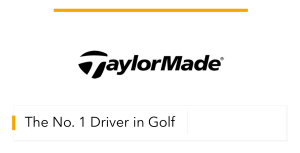Stephanie Harris on 2025 Incentive Market: Growth, New Destinations, More Non-Cash Rewards
By Stephanie Harris
Click here for EEA sponsors; here to subscribe, and here for an RRN media kit.
Note: Harris is President of the Incentive Research Foundation.

Overall, there is optimism regarding 2025 as it relates to travel incentives. The Incentive Travel Index shows that in 2025, 55% of respondents indicated programs were either keeping up with inflation or improving. That number grows to 59% in 2026. However, that means that nearly half of the programs operating in 2025 are facing difficult choices as budgets fall behind inflation.
Additionally, in North America, we see that the category facing the biggest reduction in spending is agency fees, dropping 36% in our study year over year, followed by ground expenses. This is likely driven by programs with budgets that are not keeping up with inflation.
For programs using merchandise, gift cards, and experiential rewards, the economic outlook is positive for 2025 among program owners and third parties, and there was a significant drop in those anticipating program discontinuations. That good news was balanced slightly by a slight decrease in average per-person spend to $902 from $1,090 in 2023. The $201 - $500 category accounts for 45% of total spend in 2024, which is up from 2023, marking a continued increase in mid-range spending frequency.
This continued growth in mid-range spending is consistent with more individuals across an enterprise participating in non-cash reward and recognition programs as organizations work to drive engagement and affinity across the enterprise.
Travel Trends
Attendees and planners continue to show strong preference for destinations not used before, as a new destination can inspire increased effort to earn the reward. However, we also see indication of desire for destinations closer to home. From a North American standpoint, this could mean more US and Canada-based destinations, as well as new cities and resorts across Mexico and the Caribbean.
The intent to use free time within programs is growing among third parties, rising to match the demand for free time that we have seen across our attendeepPreferences study for the last three years. This could signal some relief for program budgets, and increased satisfaction among program participants.
Personalization continues to be top of mind, with program owners looking for ways to increase the amount of choice within program agendas, gifting, and more. We encourage program owners to include questions like “What would make this program over the top for you?” or “Are you celebrating anything while you’re with us?” to help identify opportunities to deliver hyper-personalized experiences during the program.
Reward and Recognition Trends
Talent concerns and the shifting balance of generations in the workforce are starting to have more impact on program design, rewards, and program communications. Gift cards are seeing increased use and are the reward seeing the highest use across programs, according to the IRF’s 2025 Outlook on Gift Cards, Merchandise, and Event Gifting. Instant gratification, clear and concise communications, and more training to ensure managers understand how to maximize the opportunities these programs present are all part of program evolution.
Through the Total Rewards study, we saw top performing companies have a very clear vision of the role that non-cash reward and recognition plays in the total rewards package for employees. While the program structures, reward mixes, and reward values may vary, non-cash continues to be a driver of business performance.
Enterprise Engagement Alliance Services

Celebrating our 15th year, the Enterprise Engagement Alliance helps organizations enhance performance through:
1. Information and marketing opportunities on stakeholder management and total rewards:
ESM Weekly on stakeholder management since 2009; click here for a media kit.
RRN Weekly on total rewards since 1996; click here for a EEA YouTube channel on enterprise engagement, human capital, and total rewards insights and how-to information since 2020.
2. Learning: Purpose Leadership and Stakeholder
 Management Academy to enhance future equity value and performance for your organization.
Management Academy to enhance future equity value and performance for your organization.3. Books on implementation: Enterprise Engagement for CEOs and Enterprise Engagement: The Roadmap.
4. Advisory services and research: Strategic guidance, learning and certification on stakeholder management, measurement, metrics, and corporate sustainability reporting.
5. Permission-based targeted business development to identify and build relationships with the people most likely to buy.
6. Public speaking and meeting facilitation on stakeholder management. The world’s leading speakers on all aspects of stakeholder management across the enterprise.
















